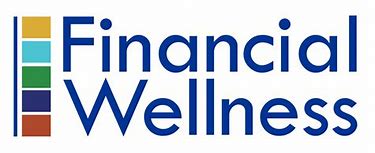April is financial literacy month and it comes at a time when the average American’s understanding about the basics of investing is declining.
An October 2018 study by Alliance Bernstein (“Inside the Minds of Plan Participants”) found that only 9% of workers in 2018 surveyed were able to correctly answer eight questions about basic investing concepts. This is a decline from 12% in 2015.
Despite the huge budgets being spent on all types of financial literacy programs, too many workers preparing for retirement said they are uncomfortable designing and managing long-term portfolios. In an effort to change this, benefits administrators have expanded the concept of financial literacy to “financial wellness programs” that combine total workplace employee benefits offerings, such as physical, psychological and work-life balance programs.
In some workplaces, financial wellness programs address health savings accounts, employee discount programs, tuition reimbursement, financial planning sessions, credit management, mortgages, and personalized financial counseling. According to Sue Walton, senior vice president and a Defined Contribution Strategist at the Capital Group, “health and wellness benefits are converging” into a new form of “benefits ecosystem.”
Walton, along with benefits managers from Best Buy, Cone Health, ADP LLC, Palm Beach County, Florida and T. Rowe Price, all addressed the new frontiers of financial wellness programs in a panel during the recent Pensions & Investments East 2019 conference held in Ft. Lauderdale, Florida.
While each benefits department offered a different program based on their employee population, budgets and benefits offering, it became clear that the modern benefits department is taking a more expansive interpretation of what it means to support employees in the home, workplace and the community. By doing this, some corporations are offering more support for a work-life-community balance. This includes benefits offered at work and in retirement, but also in the political sphere. Based on what the panelists reported, new financial wellness programs could easily make a difference in employee retention, leadership development, improved productivity and community political involvement.
For example, at Best Buy, financial wellness addresses the “total well-being of employees” that includes their financial, physical,  social and mental states for its 112,000 employees. Debra Dennin, senior manager of retirement and wealth benefits at Best Buy, said the company has developed a program of “six pillars of financial wellness” that educates workers about debt management, retirement, emergency savings, managing cash flows, insurance, and prioritizing savings and other financial goals.
social and mental states for its 112,000 employees. Debra Dennin, senior manager of retirement and wealth benefits at Best Buy, said the company has developed a program of “six pillars of financial wellness” that educates workers about debt management, retirement, emergency savings, managing cash flows, insurance, and prioritizing savings and other financial goals.
This approach is also being used by local governments.
In one of the most ambitious programs, Palm Beach County, Florida, launched its financial wellness program in 2014 for its deferred compensation 456-7(b) plan participants and hired a third party administrator to streamline its investment offerings. This resulted in a  decrease of funds from 41 to 19 and a reduction in investment management fees of 67%, from 83 bps to 27 bps on average for its funds. The streamlined offerings increased participation by 20% and increased the average deferral rates by 10%. Darlene Malaney, COO of Finance for Palm Beach County, said the move from “financial wellness to employee wellbeing” will create a “holistic employee wellbeing initiative” that bridges the gap between financial stress and its impact on physical and emotional health. To do this, the county is working with parties in health care, banking, and retirement plan experts. All this is being done, Malaney said, because the county needs to take actions that serve a “public purpose.”
decrease of funds from 41 to 19 and a reduction in investment management fees of 67%, from 83 bps to 27 bps on average for its funds. The streamlined offerings increased participation by 20% and increased the average deferral rates by 10%. Darlene Malaney, COO of Finance for Palm Beach County, said the move from “financial wellness to employee wellbeing” will create a “holistic employee wellbeing initiative” that bridges the gap between financial stress and its impact on physical and emotional health. To do this, the county is working with parties in health care, banking, and retirement plan experts. All this is being done, Malaney said, because the county needs to take actions that serve a “public purpose.”
The Evolution of Financial Literacy
Financial literacy has evolved over time. A few decades ago, when the 401(k) industry was becoming more popular as defined benefit pension plans declined, financial literacy was considered basic investing knowledge. This was financial education 101 and it emerged when it became apparent to many employers and benefits administrators that too many employees were having trouble making the basic investing decisions needed to choose investments over a 20- or 30-year time horizon in order to meet the income expectations during retirement. This is not unexpected. After all, full-time professional investment managers have a hard time reaching this goal even though they hold advanced degrees and are aided by sophisticated computers.
So what do we mean when we talk about financial literacy? One definition from the Investopedia says: “Financial literacy is the confluence of financial, credit and debt management and the knowledge that is necessary to make financially responsible decisions – decisions that are integral to our everyday lives.”
The new definition of financial wellness is more expansive. It includes an emphasis on the financial management of activities in “our everyday lives” in a capitalist consumer society, not only for employees, but their families. This includes managing the stress of college tuition debt to seeking higher wages, securing affordable health care and providing for Social Security or an annuity-type mechanism for retirees.
Importantly, while it may not be evident yet, this takes financial wellness into the political realm where economic and political policies are decided outside of the direct sphere of the corporation’s employee benefits department.
While financial literacy in all its forms is a key goal of benefits departments, financial literacy deficiencies are not just a problem in the U.S. A search of academic literature finds this topic is being addressed in South Africa, Kenya, Mexico, India, Indonesia and Canada. Other studies on this topic have been done on financial literacy differences between boys and girls, Native Americans, prisoners and students at Christian schools.
A broad 2010 study of financial literacy published in the Economic Journal by Tullio Jappelli used data on 55 countries from 1995 to 2008. One conclusion from the study found that inhabitants of countries with more generous social security systems “are generally less financially literate” than people in countries where there are fewer social and financial support systems in place. This conclusion lends support to a hypothesis that when there are more resources available to build private wealth, accompanied by better developed stock, credit and capital markets, there are more incentives to become more economically literate. While that is the hypothesis, it falls short, at least in global terms, in the U.S. workplace.
A 2008 study by the IMD World Competitiveness Yearbook found that the US ranked 22 out of 55 nations in financial literacy (Singapore, Finland and Ireland were in the top three.)
Back in the U.S., financial literacy studies show mixed results. A 2008 survey of these programs found that because attendance at employee literacy seminars is voluntary “it is difficult to disentangle the consequences of an increase in financial education from peer and community effects in raising savings.” Another 2008 study said participants could be hurt by attending financial literacy classes because it gave them false confidence about their ability to understand actual investments, which led to worse outcomes. Another significant conclusion from these studies is that is very difficult to isolate the connection between economic literacy and positive portfolio investments.
Think Outside the Box in Financial Wellness Programs
So how should 401(k) and employee benefits administrators commemorate financial literacy month?
They should be optimistic that some companies and municipal governments are applying creative solutions to the sources, rather than just the symptoms, of employee financial stress. For too long, benefits administrators, like social workers, have only addressed the symptoms of personal financial problems that affect workplace productivity.
This new inclusive thinking is long overdue. Most people bring their financial problems to work, while they also take them home. For better or worse, most of the American population is pre-occupied by work, either voluntarily or involuntarily, through job insecurity, wage stagnation, or external political concerns that threaten to slash safety net benefits for themselves or their families.
At the P&I conference, I asked one speaker on the financial wellness panel why the threats to Social Security were never mentioned from the dais when discussing benefits. She looked surprised. Then, she said the panelists assumed Social Security would always be there. This is a political assumption, not a financial one.
It is also an example of how truly effective and innovative financial wellness programs have to become more holistic, community oriented and yes, political, if they want to advocate for expanded public health and financial consumer protection programs.
While outside the immediate work confines of the benefits departments, it is clear this new approach to financial wellness must identify non-workplace sources of financial and emotional stress that hurt productivity, morale and executive development. This means addressing such things as predatory financial practices that drive employees into debt and increasing transparency in all financial transactions. It is also the approach that will create significant, pro-employee results in the next generation of financial wellness programs.











